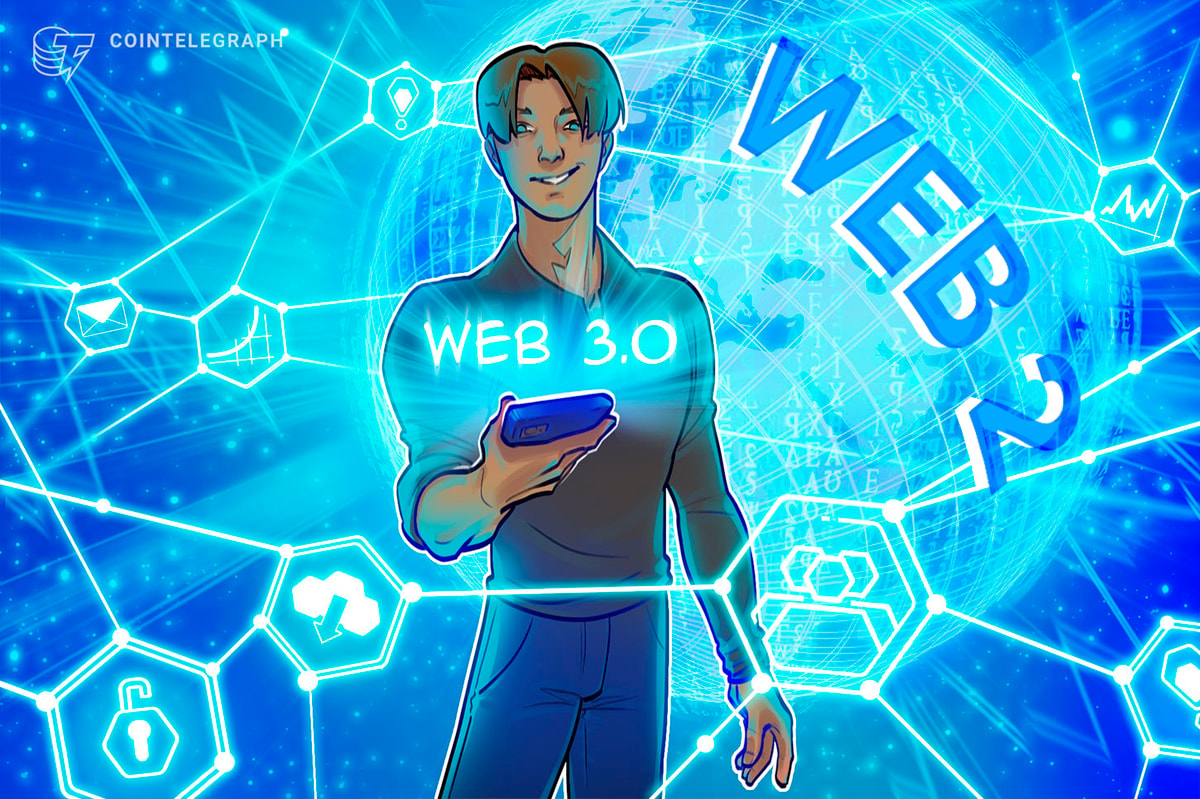Opinion by: Richard Johnson, chief working officer of Data Guardians Network
In the continued drive to extend Web3 adoption, many Web3 fans and organizations proceed to name for industries to maneuver away from Web2 processes.
Whether it’s making an attempt to make Web3 instruments really feel like a Web2 utility or redefining enterprise fashions to focus extra on Web3 infrastructure, there’s a vocal group that believes in demolishing Web2 for Web3 to develop.
This view is flawed.
Replacing current programs is neither sensible nor helpful within the quick time period and dangers limiting Web3’s progress and potential.
Getting individuals on facet
Web3 provides options to challenges from financial points to each day duties, but it surely stays advanced and intimidating outdoors the trade. Nearly two-thirds (63%) of US adults have “little to no confidence” that methods to put money into, commerce or use cryptocurrencies are dependable and secure.
Meanwhile, Oxford University has recognized the “belief paradox” of blockchain expertise: The contradiction between blockchain’s assurances of eradicating worries over belief is inherently held again by the general public picture missing confidence within the expertise. Together, these developments display a broader confusion and lack of engagement from the mass market.
This pattern basically signifies that customers will most definitely “play it secure” with Web2 functions slightly than threat experimenting on Web3. It’s this barrier that slows Web3 adoption. Innovators can not rely solely on the advantages of Web3 however as a substitute should have interaction with the prevailing infrastructure in the event that they hope to attract in a wider viewers.
A gradual shift
Technology not often modifications in a single day. Just as automobiles as soon as shared the highway with horse-drawn carriages and fax machines coexisted with electronic mail, Web3 adoption will probably be a gradual course of. It’s a standard false impression that participating with Web2 suppliers, processes or instruments will undermine the core ideas of Web3. The actuality is, nevertheless, that solely by combining the 2 can we speed up adoption.
Keeping Web3 remoted solely limits its attain and reinforces public skepticism. Web2 apps, from web sites to cell platforms, are already acquainted and trusted. Instead of dismissing this, builders can faucet into that belief to deliver extra customers into the Web3 house.
Related: Here’s how hybrid blockchain options bridge the hole between Web2 and Web3
The Web3 scaffold
Collaboration between Web2 and Web3 is already occurring, primarily pushed by Web2 suppliers. In finance, giants like PayPal, Visa and main banks are integrating crypto and blockchain companies, legitimizing them for the mass market. Beyond finance, Amazon Web Services has launched Web3 labs, and Google Cloud is working with zero-knowledge proofs, weaving Web3 into conventional choices.
While Web2 functions are pushing for a center floor, Web3 builders can and must be doing the identical, leveraging Web2’s established market to scale quicker. Just as 4G supported the rollout of 5G, Web2 processes can assist construct higher Web3 apps.
Looking at this in observe
Web3 builders can steadiness decentralization with the comfort customers count on from Web2 by prioritizing accessibility, from glossy UX to human-readable names. They also needs to acknowledge how their merchandise may gain advantage Web2 organizations.
Too typically, Web3 fans assume their strategy’s superiority is apparent, avoiding the work of explaining why it’s higher. This dangers alienating customers as a substitute of profitable them over. Demonstrating sensible benefits by engagement with Web2 choices can assist bridge the hole between each sectors.
A transparent instance is the synergy between AI and blockchain. If every bit of information used to coach an AI mannequin had been immutably tracked on blockchain, whether or not authentic or frontier knowledge, its origin, utilization and outcomes might be verified immediately, eliminating such disputes.
Fundamentally, a good suggestion will ship whether or not it’s a Web3 utility or not.
Demonstrating this worth — even when it means participating with Web2 sectors — will improve the legitimacy of the software and achieve higher consideration from the mass market.
Engaging to innovate
While it could really feel uncomfortable to lean into Web2 to ascertain a higher belief in a Web3 software, the advantages are simple. Bringing any type of expertise to the mass market can generate a spread of points, together with day-one bugs or scaling challenges. Research from Nielsen exhibits that usability testing with real-world customers can enhance a product’s success price by as much as 500%. In this fashion, getting Web2 customers to dip their toes into Web3 functions will imply a higher finish product.
Debates over “Web2 vs. Web3” might seize consideration, however profitable firms not often outline themselves by the label. They are AI corporations, monetary establishments, client platforms and knowledge firms, utilizing no matter instruments greatest serve their market. No buyer wakes up wanting to make use of “a Web3 app”; they need higher banking, smarter AI or extra helpful platforms.
The winners will probably be these quietly utilizing Web3 to resolve actual issues, not chasing purity factors.
Working with Web2 expands the person base, creating extra alternatives to check, iterate and enhance. Web3’s passionate neighborhood has but to achieve mass-market enchantment, and attaining meaning embracing Web2 processes, habits and infrastructure which have formed expertise adoption for many years.
Opinion by: Richard Johnson, chief working officer of Data Guardians Network.
This article is for common data functions and isn’t meant to be and shouldn’t be taken as authorized or funding recommendation. The views, ideas, and opinions expressed listed here are the writer’s alone and don’t essentially replicate or symbolize the views and opinions of Cointelegraph.









